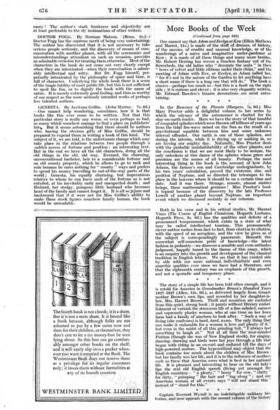In the Romance of the Planets (Harpers, 76. (Id.) Miss
Mary Proctor • adds a delightful volume to her series by which the odyssey of the astronomer is charted for the stay-on-earth reader. Here we have the story of that handful of congealed splashes which were thrown off billions of years ago from the tidal fire-wave raised on the Sun as the result of a gravitational squabble between him and some unknown sidereal offender. Our earth is one of those splashes, and during the interim, while it is drying up or soaking in, we are having our mighty day. Naturally, Miss Proctor deals with the probable uninhabitability of the other planets, and the conclusion is that we are most likely to be unique, the only onlookers at this dance of the spheres whose grace and precision are the source of all beauty. Perhaps the most interesting thing in the book is the account of how John Adams, the farmer's son and Cambridge undergraduate, by his two years' calculation, proved the existence, size, and position of Neptune, and so directed the telescopes to the place in the heavens where it should be on a certain time and date. And it was there.- Strange, remote, almost sinister beings, these mathematical geniuses ! Miss Proctor's book is topical because of the discovery by the late Professor Lowell of another planet beyond Neptune, an important event which we discussed recently in our eolumns.
* * * a










































 Previous page
Previous page